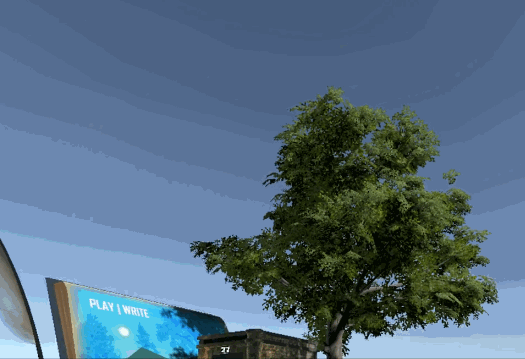
Play | Write is an ongoing research project at Ithaca College led by Professor Nathan Prestopnik. The goal of the project is to explore the possibility of using a virtual reality environment to facilitate the creative writing process.
I worked on Play | Write during the Spring semester of my freshman year. I stayed on as an Ithaca College Summer Scholar to work on the project during the summer. When I joined the project, it was still in the conceptual stage and my task was to begin development of the software. Using the Unity game engine, I created the backend of the entire system as well as many of the features.
Since this is a research project, we experimented with many different features with the idea that not all of them would have an impact on a writer’s creative process. Features could be proposed, designed, and tested to see the impact they had. The features I worked on include:
- Scene Changing: The user can select or change the environment in which they want to work (treehouse, office, or notebook world). They select where they want to work and can walk seamlessly through a virtual hallway to that destination.
- Desktop Integration: Controllers and Vive trackers provide writers with a mixed reality experience in which they can sit and type. Using the controllers and Vive trackers, a user calibrated desk and chair is integrated into the virtual environment. This desk mirrors the computer desktop and has a tracked keyboard for typing, allowing the user to write and use their computer desktop while being surrounded by the virtual environment.
- Idea boards: These boards exist within the virtual workspace. Idea boards can be blank, or contain text and images. They are scalable, moveable boards that can be drawn on using a finger.
- Copy-Paste through Reality: One of the features of the desk is the ability to copy and paste text through realities. For example, the text in a user’s document can be copied and brought into virtual reality on an idea board. This board can also contain images as reference and can be put back into the desk to be pasted back into a document.
- Backend: All projects are saved into files. The system remembers and can recall the data stored on idea boards and other objects.
This project was developed in the Unity game engine and uses the HTC Vive, Vive Trackers, and Leap Motion 2.





